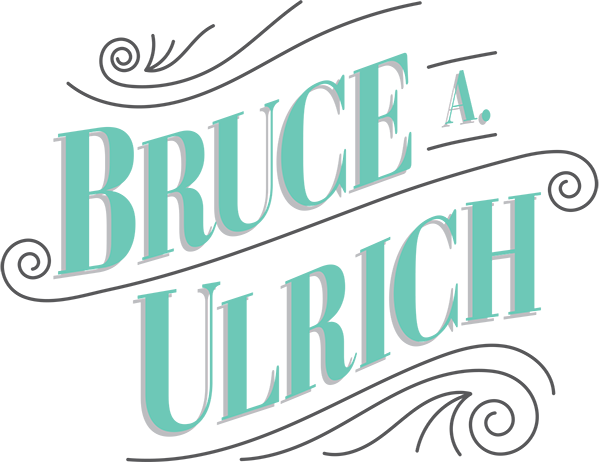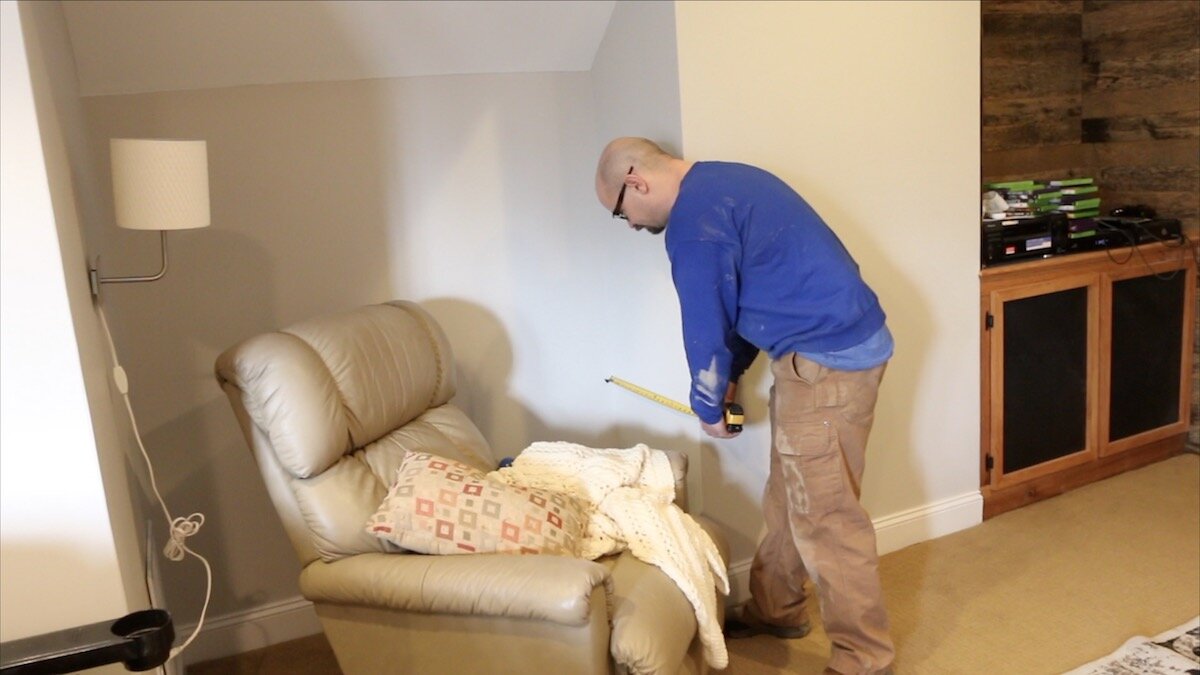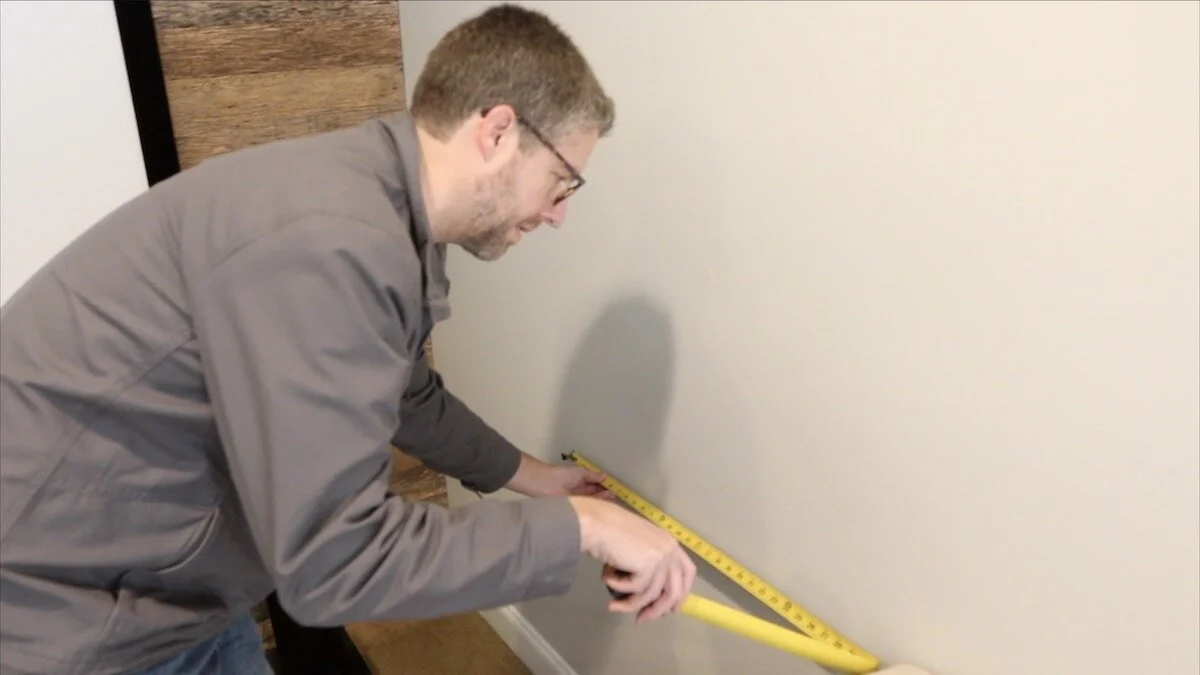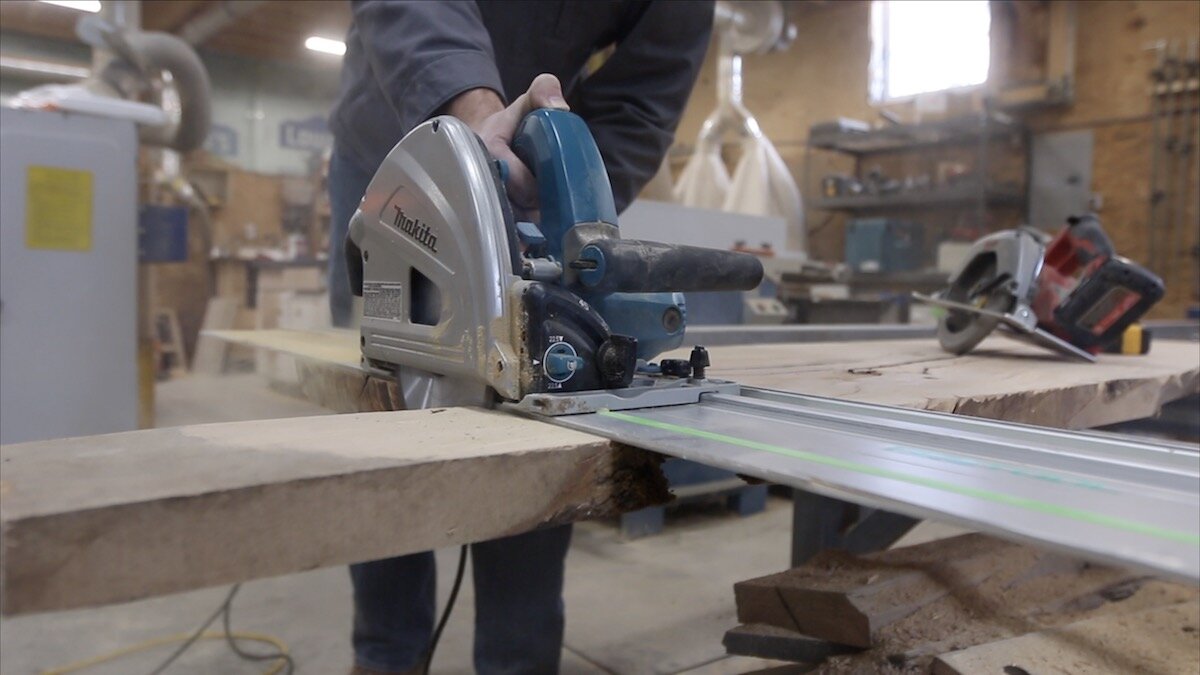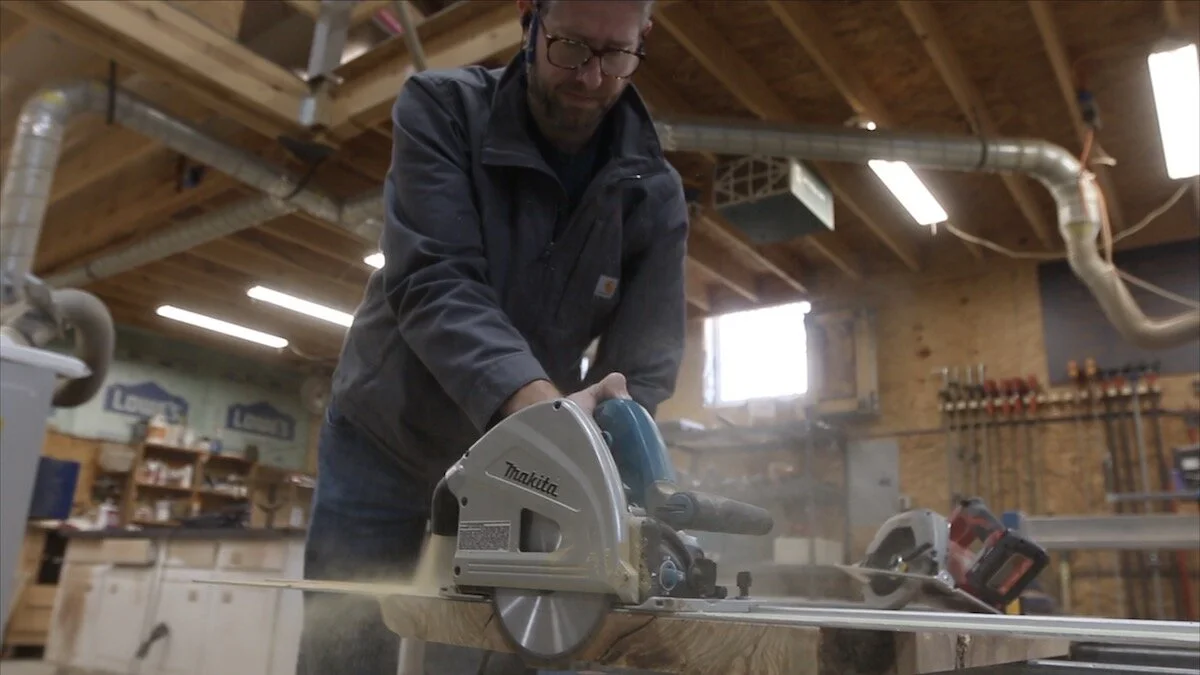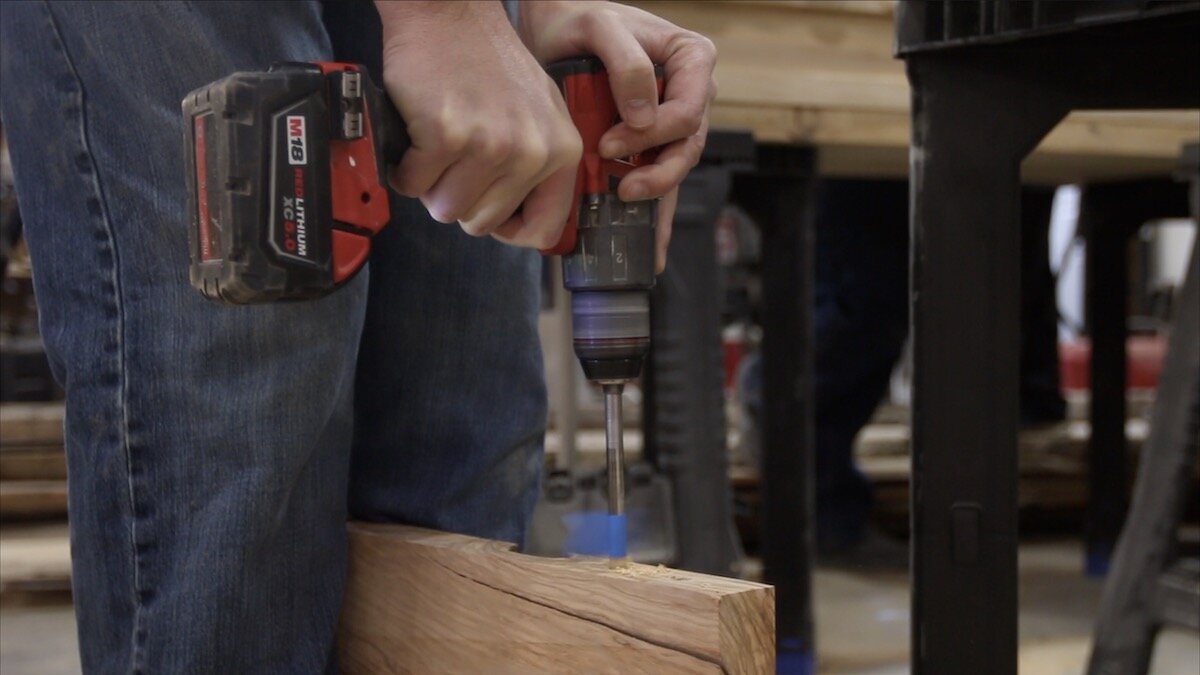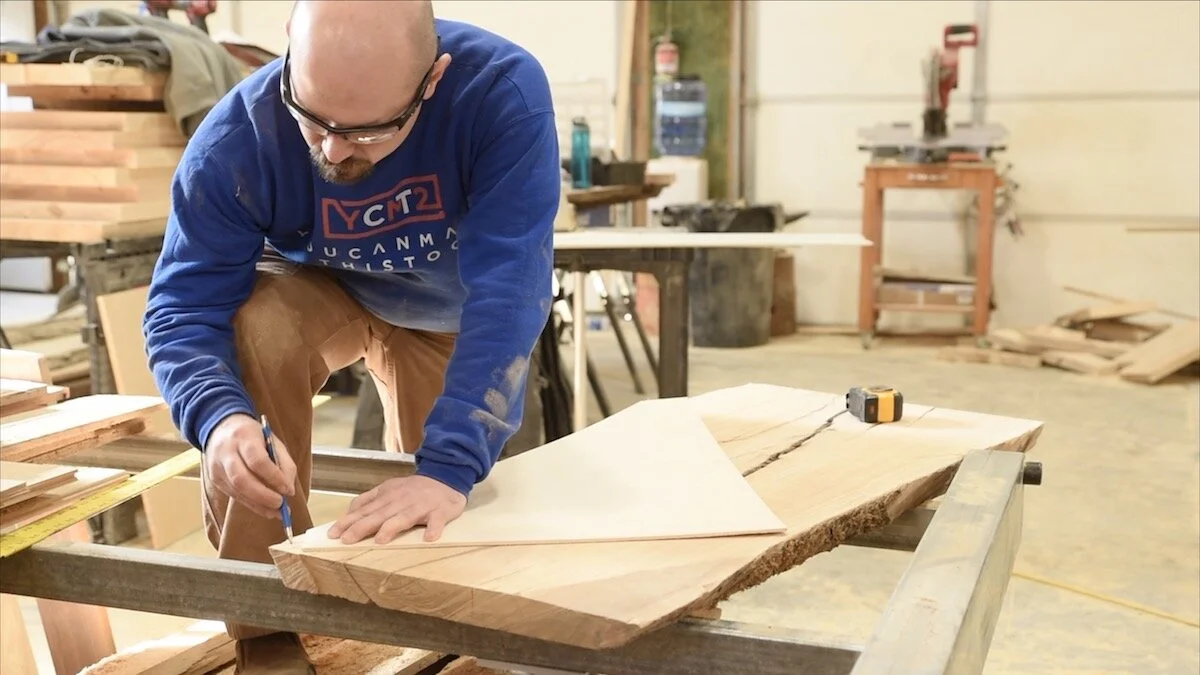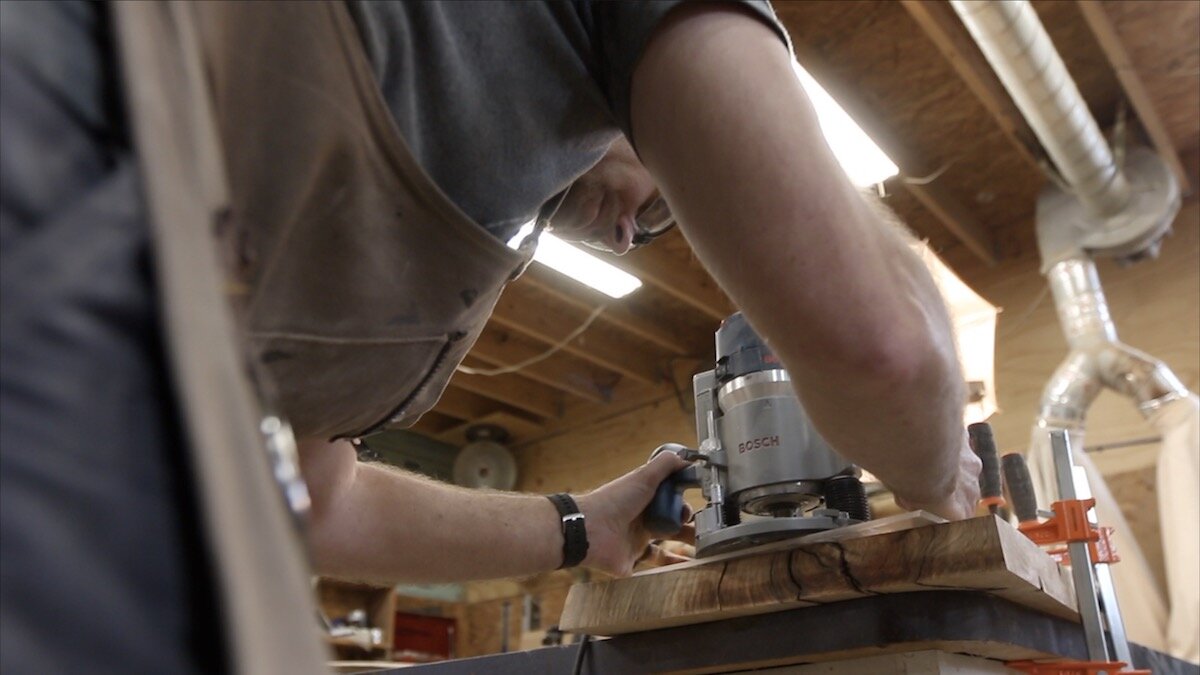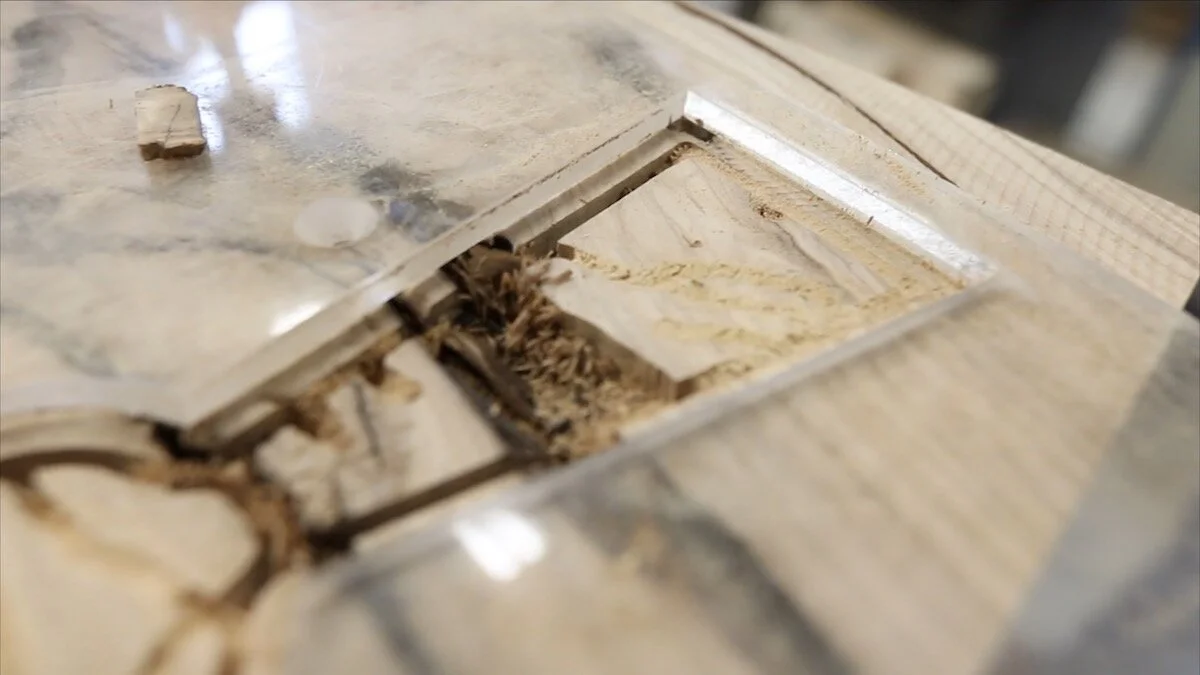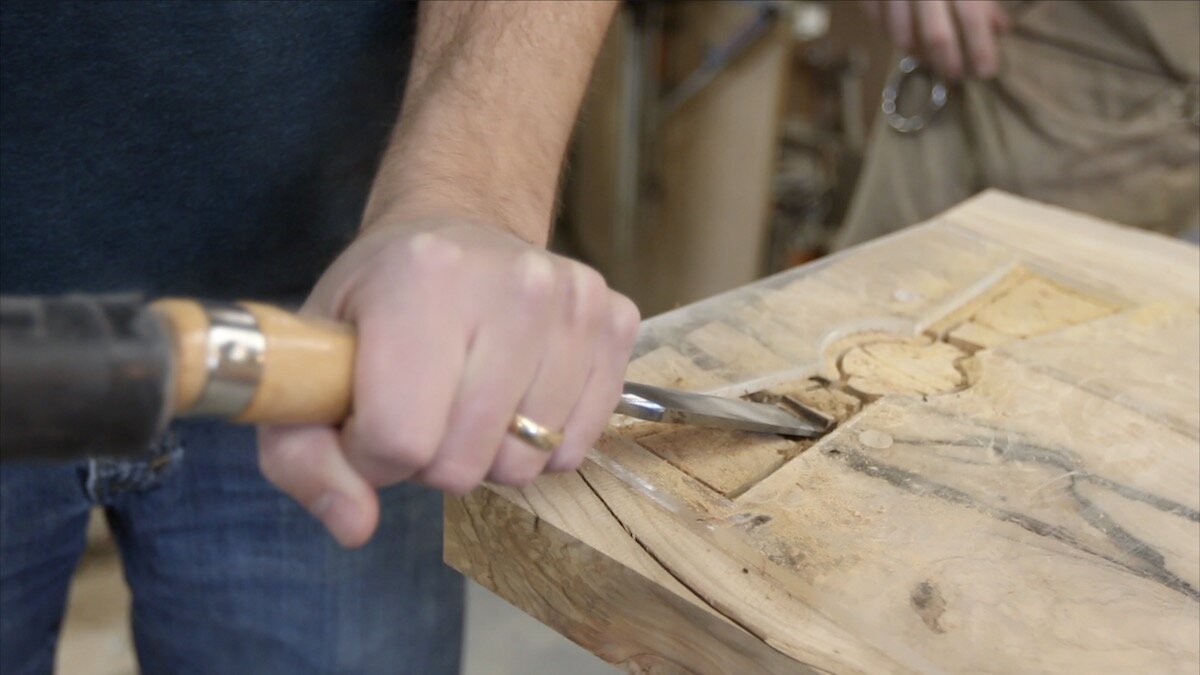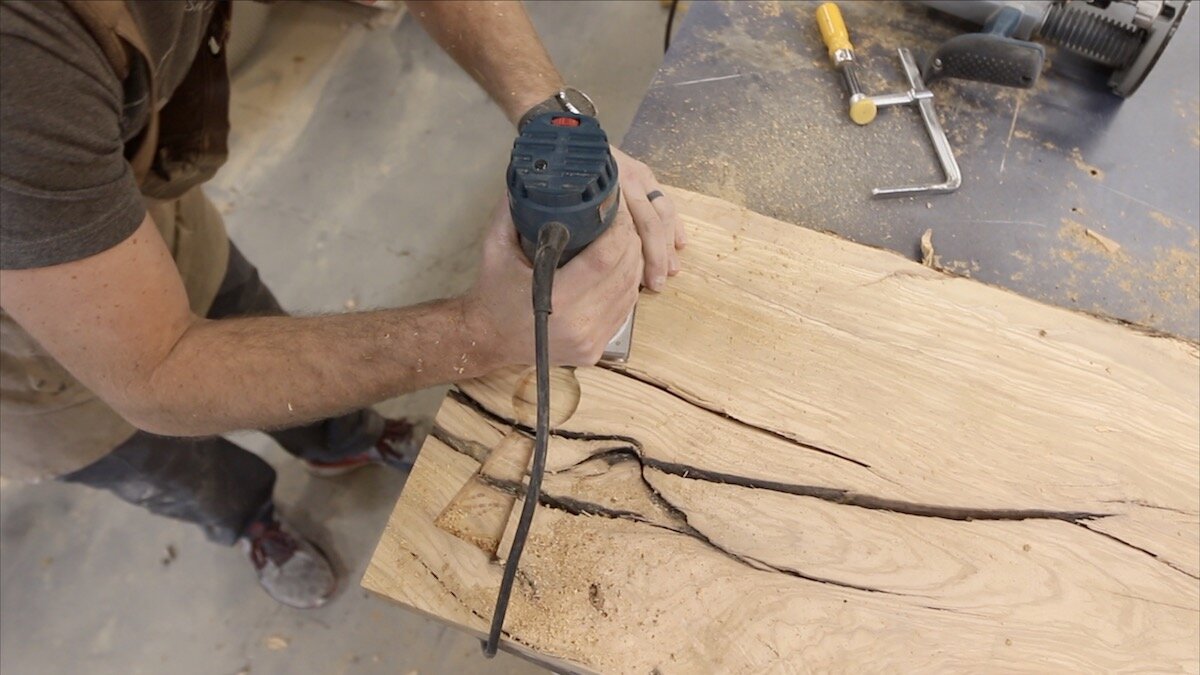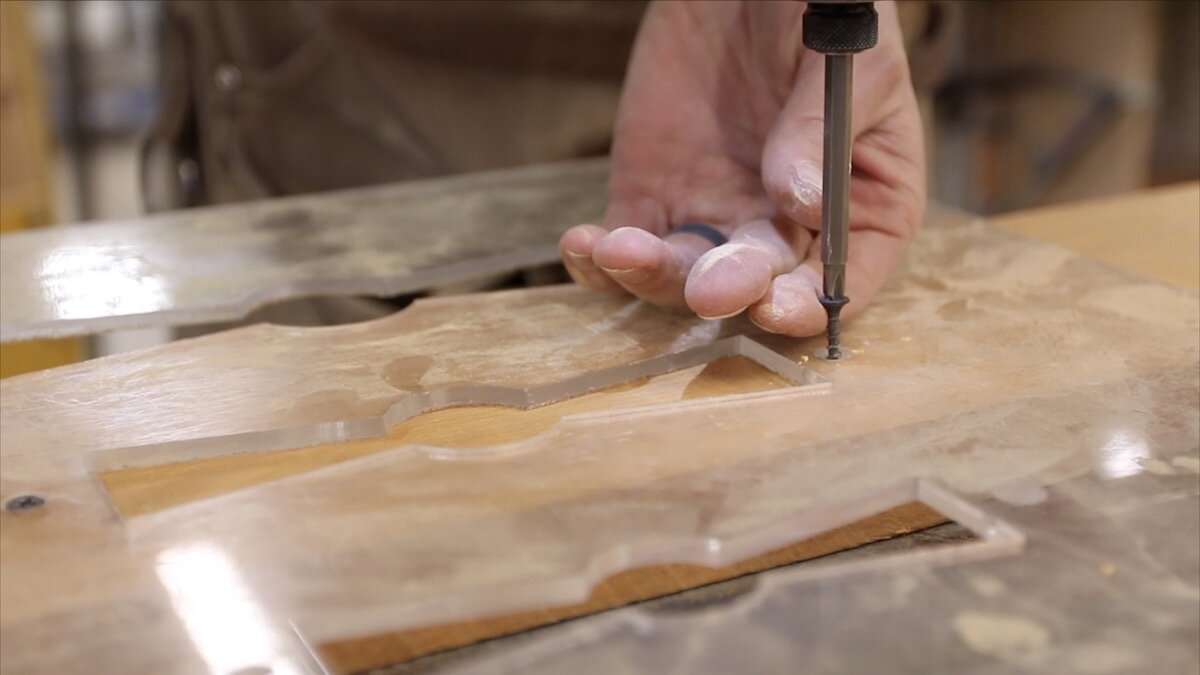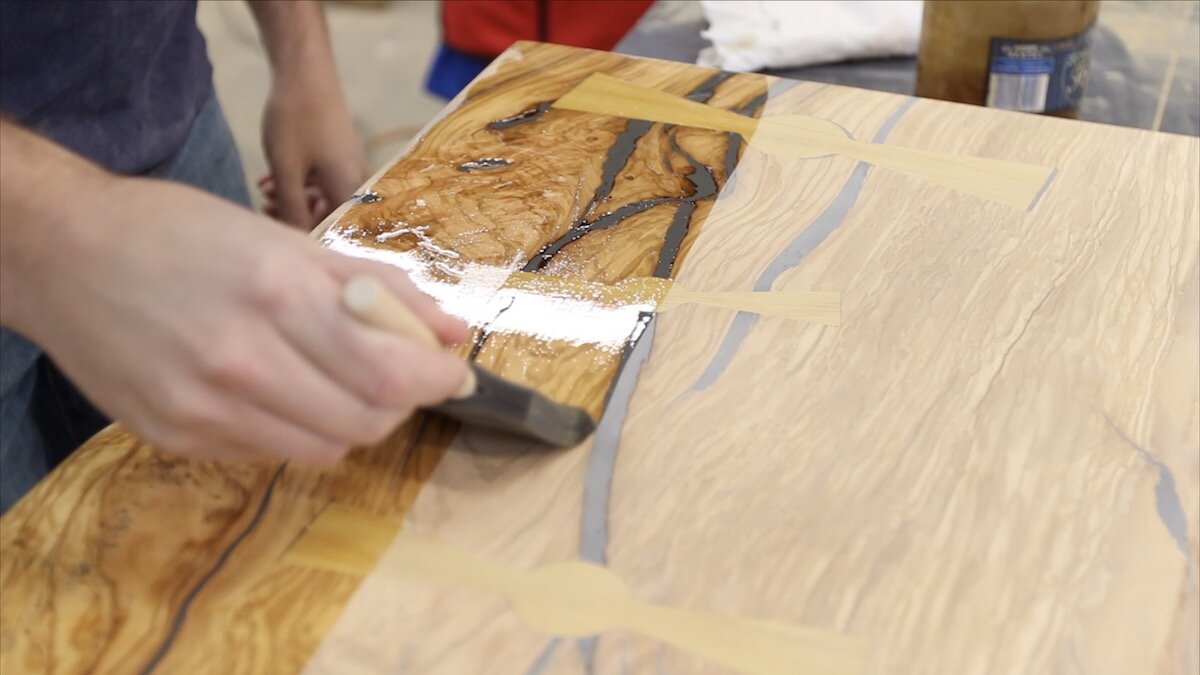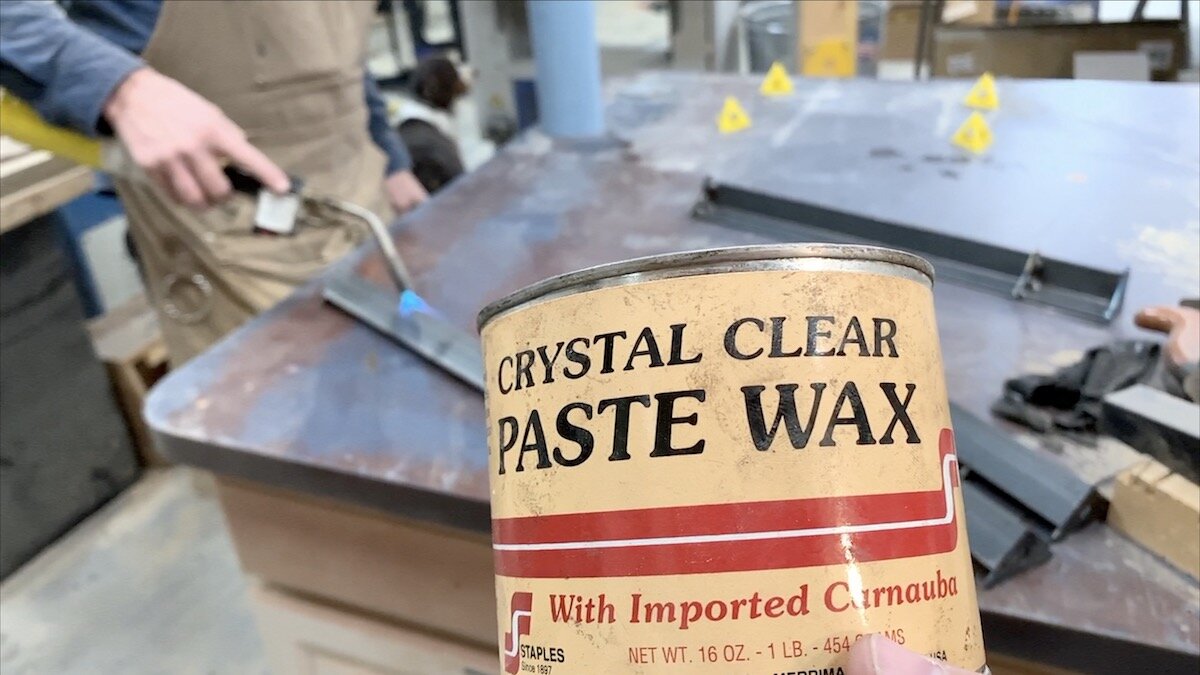Live Edge End Table w Steel Legs
VIDEO:
In this video, I'm collaborating with Caleb from YouCanMakeThisToo. We each made an end table with steel legs from the same olive wood slab. This live edge slab had some amazing grain but had a ton of cracks in it too. We each used different methods to make different live-edge end tables but that are still complimentary. We're building these tables in a custom production woodshop, not in our hobby shops, so it's cool to learn some tips and tricks to be more efficient with the build. Caleb made his table in 6 hours!
Watch the video and follow along with the steps below:
BACKGROUND:
Nick is one of the owners of Lakeside Woodworks and his wife, Jessica is their social media manager as well as many other things. We were building in their shop and the end tables we were building were going to live in the theater room in the basement of their house.
TOOLS & MATERIALS: (affiliate links)
5 Way Painter's Tool: https://amzn.to/2Ovm8m6
Putty knife: https://amzn.to/2UV228V
Putty knife (large): https://amzn.to/2SmKh0u
Drill & Driver: https://amzn.to/2GUTQNK
Bosch Sander: https://amzn.to/2RYHABT
Random orbit sander (smaller): https://amzn.to/2C0gR0k
Circular Saw: https://amzn.to/31oDbLI
Track Saw: https://amzn.to/2v3WNZD
Natural Danish Oil: https://amzn.to/31xE98E
Foam Brushes: https://amzn.to/395fOcL
Bondo: https://amzn.to/2Hn371e
Plug Cutters: https://amzn.to/2uIaP3a
Paste Wax: https://amzn.to/2SF5WQk
Wood Glue: https://amzn.to/2HiRQyH
STEPS:
WOOD SELECTION:
We started out in the Lakeside Woodworks shop where they have tons of slabs of different species, sizes and thicknesses. We picked out a slab of olive wood that had some really gnarly cracks, but we knew we wanted to build something out of it.
We landed on making a couple of end tables for Nick and Jessica's house in their theater room. They had a spot in a corner by a recliner that was begging for a small table, so Caleb started taking some measurements to fit that spot.
On the other side of the room, I moved a bookshelf they wanted to get rid of, and talked it out for the dimensions of what a table would look like there.
BREAKING DOWN THE SLAB:
Then, it was back to the shop to start cutting up the slab. We picked this olive wood slab that was quite split, but we really wanted to make these tables out of it. I grabbed a circular saw and a track saw and started cutting into the slab after Caleb and I scoped out the parts of the slab each of us wanted.
Nick (one of the owners of Lakeside Woodworks) had plenty of good tips and tricks to show us, since they are a production shop and have to really be efficient for their client builds. I'll share some of the things I picked up on, but be sure to go watch Caleb's video after this one. He'll be sharing even more tips there. I'll link to his video down in the description.
The first tip was when making a cut with a track saw, especially in some really dense wood like this olive wood, make a cut, move the track over just 1/16" of an inch and make another pass. This will clean up any burning that happened on the other cut. Such a simple thing, but it works great!
SECURING THE LOOSE PARTS:
The part of the slab I decided to use had a ton of cracks in it. I thought they didn’t go all of the way through, but they were pretty unstable. There was a little corner piece that was loose, so I grabbed a drill, drilled a couple of holes and secured it to the piece below it with some screws. I would just put some dowel plugs in the holes later. Plus, it was the back of the table top, so it would not be seen anyway.
If you're not sure how deep you drilled a hole, grab a pencil or something, stick it in there, and mark where it comes out of the hole. Then, you can use this to compare on the side to know how deep it is.
To keep from going too deep on the second hole, I put a little flag on the drill bit so I would know when to stop.
CALEB STARTING ON HIS TABLE:
Meanwhile, Caleb was starting on his table. He grabbed a scrap piece of plywood and made a quick template to use as a guide. We'll check back in with his progress in a bit.
CREATING BOWTIE INLAYS USING A ROUTER:
Nick showed me how he does inlays using a router and it was a way I've never done before. I'm not going into full detail in this article, but I'll be making another video and article soon about the full process. You won't want to miss it! (When I get that posted, I’ll link it here.)
Nick made this template with his laser engraver and some 1/4" acrylic. Here you see me using a plunge router to trace around the outside of the bow tie cutout, and then we will go through the middle to kind of break it up. This establishes the mortise and allows us to come back with a chisel to remove the bulk from the center.
This olive wood was so dense, the sawdust would get packed in the grooves. We used a DiResta ice pick to clear them out.
After the chisel, we come back with a flat bit and clean up all of the inside to make sure the mortise was nice and clean.
THE ACTUAL BOW TIES:
Next up is the part that makes the actual bow ties that will inlay into the mortises we just cut. This template was also made on Nick's laser and he countersunk a couple of holes to just secure it down to the bow tie stock. That way, the screws are not in the way of the router.
Then, we proceeded to cut out the bow ties. We're using osage orange for the wood species for the bow ties.
I took the osage orange board over to the miter saw to cut off the section with the bow ties, and then to the bandsaw. I resawed the board so it would release the bow tie. Again, this wood was so dense, the sawdust just got compacted in the grooves.
We sanded the edges of the backside to create a little chamfer.
Then, I glued them all in. With how we cut these and measured the cut off of the bandsaw, they seated fully into the mortise. You'll see a few gaps on that biggest bow tie and I think I did something to make the template slip. It's totally my fault.
Then, I just flushed them up with a hand plane. Oh, and I used some plugs to cap the holes we drilled earlier.
CALEB STARTS WELDING HIS BASE:
Back over on the other side of the shop, Caleb was already working on the base for his table. He's welding up some simple legs from some square tube and angled steel. He's definitely going to complete his table first.
FILLING THE VOIDS:
Nick has been using tinted Bondo to fill voids for a while now, because it hardens quickly and it's sandable. And if you tint it like this, it looks really nice! I just used a couple of putty knives to fill all of the voids in the piece. Mine had a lot of voids, so we actually had to mix up a second batch of Bondo to get them all.
Before it fully hardens, it is best to come back and scrape the excess off. This saves a TON of sanding!
SANDING:
I still had a decent amount of sanding since I forgot to scrape off the excess from the top, but that went quickly enough. I just worked my way up through the grits, starting with an aggressive paper at about 80 grit, all the way up to about 150 grit.
ADDING FINISH:
Time to add some finish! I was loving how it was looking, but then when I flipped it over and started on the top, I could not believe it! The grain in this olive wood is just wild, and I'm glad I stuck it out with this slab...cracks and all. It was a considerable amount of work to get it stabilized, but totally worth it.
CALEB APPLIES FINISH:
Caleb left a section of bark on the live edge and it looks really cool. Be sure to click on the link below and go over to his video to see how it turned out. And if you don't already subscribe to his channel, do it! He makes some cool stuff!
ADDING A BOTTOM SHELF & WELDING:
We decided to have a bottom shelf on this little table, so I grabbed a piece of walnut that looked nice and milled that up.
I started marking and cutting some angled steel for the legs. I just used his cordless portable bandsaw to make the cuts. Nick had a bunch of these tabs lying around, so we decided to use them to secure the top, the bottom shelf and as feet under the steel.
Then, we started welding it all together.
I'm still learning to weld. This was all part of me learning. And as you can see, I'm not great at it at all. In fact, it's pretty frustrating to me, but I'm going to keep at it.
Since this table will live in Nick's home, I decided to let him finish up the rest of the welds.
Next, we marked about 1 bob up from the bottom and welded on another set of those tabs. The lower shelf would rest on these tabs.
Then, Nick knocked out the rest of the welding so we could hurry this along.
TREATMENT FOR THE LEGS:
I cleaned up everything with some denatured alcohol, and then we applied a simple finish to the steel. We just heated the legs up with a torch and wiped on some paste wax while they were still hot. This gave a nice, darkened look to the steel and it will help prevent rust.
LOWER SHELF:
I switched back over to the walnut shelf, and cut it to its final size.
We ended up not having enough washers so we tried to make some out of walnut. Because....lasers. This didn't end up working, but it was fun to try to problem-solve with what we had. If you run into some spot in a project and you don't have the right thing that you need, try to improvise and see if there's another way to get it to work. It doesn't always work out, but that's ok.
Adding finish to walnut is always a highlight. We are using some more of that natrual danish oil, and the walnut just jumps out at you after adding this to it!
ATTACHING THE LEGS AND LOWER SHELF TO THE TOP:
We trued up the legs at the sander, and then started attaching them to the table top. Once we got two of them in place, we could figure out where the other two legs would go based on the size we calculated for the smaller shelf.
Then, we flipped it over, buffed on some paste wax, and this table was done!
CONCLUSION:
It was really fun to build something in a shop other than mine, and more specifically, in a production shop. They are really efficient with their workflow and crank out a serious amount of projects. Big thanks to the folks over at Lakeside Woodworks in Kentucky. If you’re in the Lexington, KY area and you’re looking for some cool furnishings for your home or business, reach out to them. They do great work!
Thank you for following along with this project! I appreciate you taking the time. If you want to interact with me more, follow me over on Instagram @Brudaddy. I’ll see you again soon on the next project or post!
